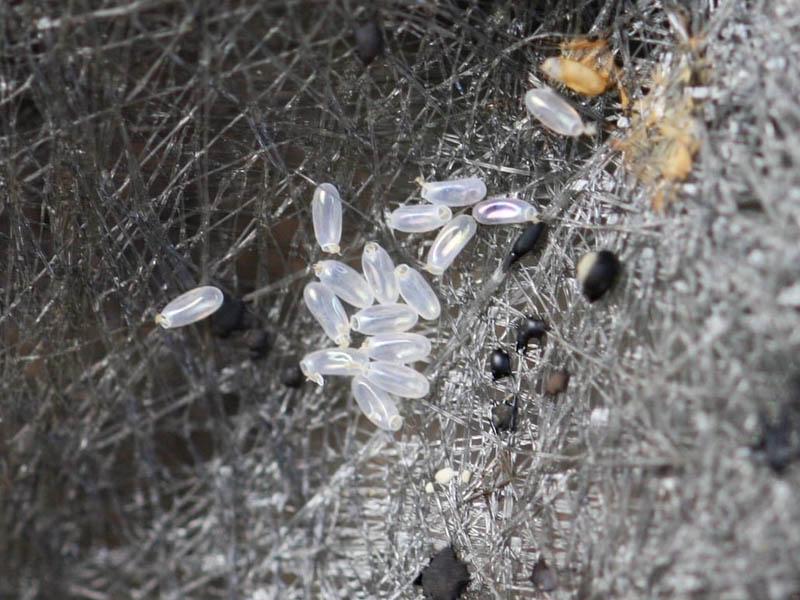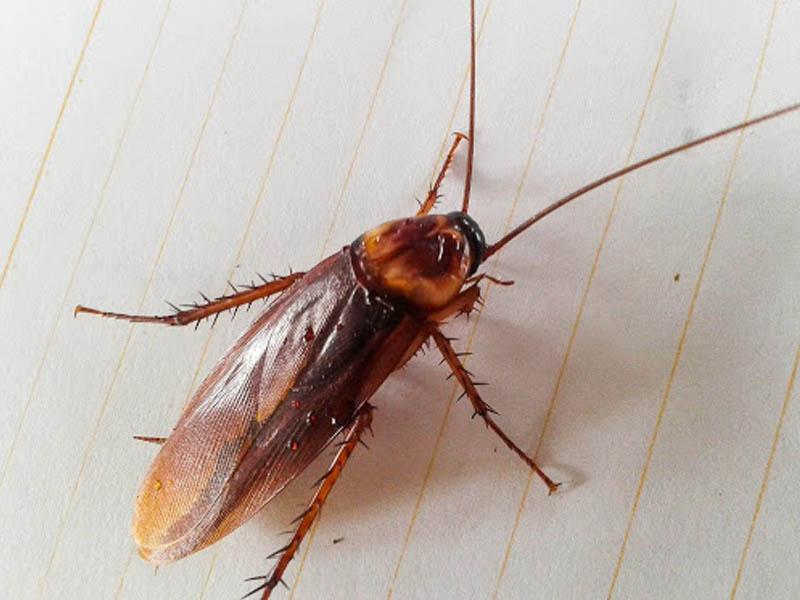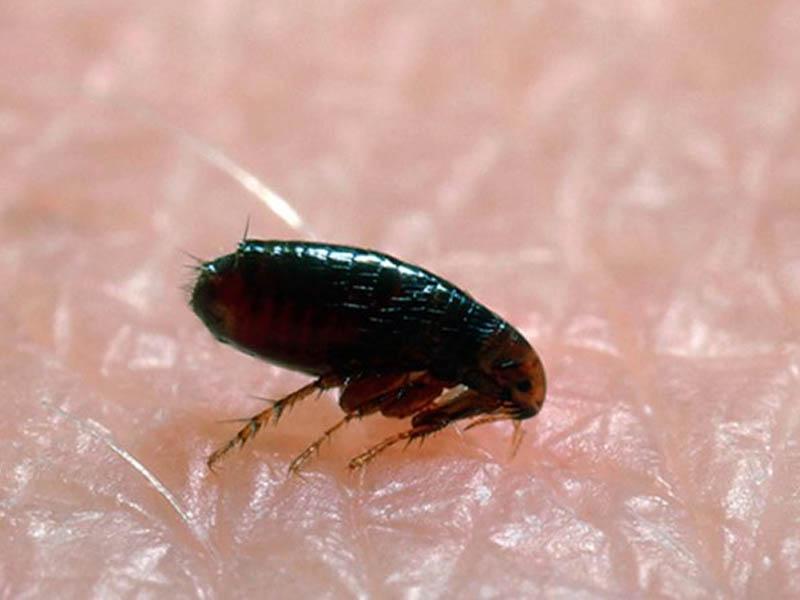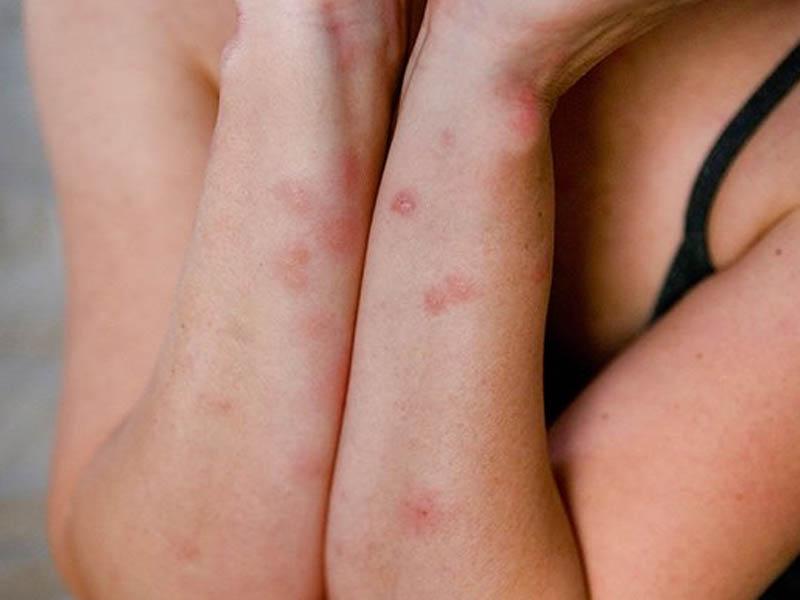
Without knowing the type of insect, I can't buy a remedy, and I need to decide today. I don't want to wait until the evening, because I will have to go back to sleep in an apartment full of unknown biting insects. I want to understand what bed bugs look like, maybe they are the ones I have. Tell me if these insects have 1-2 bright signs that will help me to unmistakably recognize them in the future. I'm afraid I'll be confused when I see them again. It also seems to me that the parasites are somewhat similar to cockroaches.
The author of the portal answers the question:
In my material below, you will learn how to distinguish bed bugs from other insects to within 100%.
What do bed bugs look like? General information about the appearance of the insect. What features of the structure do you need to know?
Pests of different species (herbivores, predators, parasites) have a number of parameters in common:
- The body is oval, flattened;
- 6 limbs;
- 1 pair of tendrils;
- oral apparatus of sucking type (there is a proboscis).
The coloration may differ. For example, bedworms have a brown chitinous shell, while shieldworms have a brighter shade of outer covers, due to which they hide against the background of leaves and plants. In addition, the coloring is a way to warn other insects that the pest is dangerous.
Bed bugs live closer to humans, they do not need to defend themselves, and therefore the coloring is more peaceful shade.
Bed bugs' mouths are of the stabbing-sucking type, so they cannot eat coarse food. Their trunk is powerful enough to pierce their host's skin and get a portion of food. Predators, on the other hand, have a mouth apparatus of the gnawing-sucking type, which allows them to feed on carrion and other insects.

What a hungry and full bed bug looks like
At such individuals there is a difference - the ability to increase in size after eating. When blood is consumed, the body swells up. As a result, juveniles and adults increase 1.5-2 times, sometimes more. At the same time the outer covers are stretched, the body slightly changes shape and color: from flattened to rounded, it becomes red, maroon or brown in color. As food is digested, the color of the chitinous membrane returns to its original brown color.
The shape of the body also changes, the bed bugs become the same size.
The tendency to enlarge the abdomen is a natural ability of house bugs. It is acquired during the formation of external covers. So the larvae, like the adults, also become larger. It is important to understand what a bedbug looks like after eating in the early stages of development.
At the same time, the small insects become brighter in color, which is due to the not fully formed outer covers. The chitinous membrane is still transparent, and therefore, the obtained blood portion is clearly visible.


How to distinguish a female bedbug from a male
The main indication of the sex of these pests is the size of the body. Females in most cases 1 to 3 mm larger. This helps to recognize the parasite. In addition, there are other differences:
- body shape: females have rounded abdomen, its lower part more expanded than that of males;
- male representatives have a sexual organ on the end of the abdomen, due to which this part of the body seems more elongated and pointed than that of the female.

Appearance of bed bug larvae
Such insects are similar to adults in appearance. They are small, with a body length of 1-3 mm, which depends on the stage of development. For example, a larva that emerges from eggsThe nymph is not more than 1.5 mm, and often even less - 1 mm. At the next stage of development, the insect transforms into a nymph. The body length is larger - 2-3 mm. To imagine what house bugs look like, it is necessary to study the body structure of such insects in general. The fact is that small and large (adult) individuals are similar in many ways. The external signs are almost the same.
Age larvae and nymphs are determined by the size of the parasite. Young individuals feed infrequently (every 1-2 weeks), after which the chitinous shell soon changes.
The duration of development to imago varies from 35 to 50 days.

What the eggs of a house bug look like
These are formations of small length (1-1.5 mm), but smaller ones (up to 1 mm) are more common. The shell protects the parasite developing inside from negative external factors: poisonous substances, water, critical temperatures. The latter still has an effect on the parasite.
But still the shell somewhat smoothes its effect. The egg has a lid on one side. It is firmly closed while the parasite is developing inside. When it is time to move on to the next stage of growth, the larva emerges through the lid. As a result, an empty white shell is left where the formation was attached (on all surfaces).

Who can a bedbug be confused with? Which insects are similar and also bite?
If you need to know what a house bug looks like, you should study the differences from other insect species:
- Cockroach (red, black). The size of the body gives away these pests. Bed bugs are much smaller than adults. Cockroach larvae are also somewhat larger than blood-sucking insects. Cockroach limbs are covered with long hairs, while bed bugs lack this feature.
- Flea. The parasites are similar in body length. However, bed bugs are lighter in color. The body of fleas is also different: oval, elongated. The back part is longer. The limbs are also different. They are designed to jump. This means that the feet of fleas are also longer.
- Mite. Such pests have more differences than similarities. For example, they have four pairs of limbs, not three. The whiskers are absent and the mouthparts are larger. However, the pests are similar in body size and color. It is important to consider the peculiarities of feeding. If mites bite 1 time, while they sink their mouthpieces under a person's skin, bed bugs introduce a thin proboscis several times, while they do not remain on the human body.



Signs of bed bugs in the apartment
You can tell that parasites have appeared at home by specific manifestations:
- unpleasant smell, it resembles an old cognac, is detected not immediately, but as soon as the house becomes a lot of bed bugs, this is a consequence of the release of special substances by parasites, as well as the appearance of excrement on the surfaces where the pests crawl;
- Availability bites, they are detected in the morning, because these insects attack in the dark time of day when a person sleeps soundly (after 2 am), and they differ from the traces of contact with other insects - they form a track, usually in one approach the pest makes 2-3 bites;
- black dots are the excrement of parasites, more often they are left in the nests;
- husk (egg shells, light brown shells of larvae and nymphs) - also found in the nest, but can also be found in different parts of the apartment, where the parasites live.

What do small and large bed bugs look like? What are they? Can they be dangerous to humans?
Bedding or bedding individuals retain their external features throughout their development and life. Thus, larvae, nymphs and adults have limbs, a pair of antennae, a rounded and flattened body, which is also segmented. The main difference is the size.
Adults are 3-4 times larger than young bed bugs. The size difference depends on the age of the insects and the degree of saturation.
In addition, young individuals still lack the ability to breeding. They acquire it when they reach the last stage of development - imago. When formed, the chitinous shell of larvae is almost white. In spite of this, if you look closely, you can see similarities between the larva and the nymph. They all have the same external features.
Interestingly, the adult male of a house bug sometimes corresponds in body length to a nymph (a young individual on the threshold of the next stage of development - imago). This is due to the difference in the development of parasites with different sex characteristics. The nymph at the last stage of formation is characterized by a body length of 4 mm. The male is not much larger than the young.
This is the main reason why insects with these body parameters are often confused.
Parasites pose a danger to humans, but not directly. They do not spread pathogens. The main harm they cause is:
- allergy on the saliva administered during the attack;
- Inflammatory process, which can develop if the site of a bedbug bite becomes infected.

Peculiarities of the body structure of the bed bug. What bed bug bites look like (photo)
Peculiarities of the body structure of pests:
- One pair of eyes on the head, with the organs of vision functioning weakly, but their abilities are enough for bed bugs to distinguish all shades of red, and they orient in space through the sense of smell;
- The antennae are highly sensitive, helping the insects to look for food;
- in the mouth apparatus 2 channels - through one of them passes blood, which is sucked out by the pests, and through the other a substance similar in properties to an anesthetic is injected;
- segmented abdomen and thorax, on which the reduced elytra are barely visible.
It becomes unsafe to go to bed when there are insects in the house. In the morning you can find many bites, which cause severe itching, swelling. The intensity of these processes depends on how strong the allergic reaction develops. Children have a higher sensitivity to parasite bites. This means that the size of spots with pronounced hyperemia (redness) will be larger. Bites are usually arranged in a track (2-3 pcs.), because the parasite bites several times, moving with it. They are found on exposed areas of the body:
- stomach;
- back;
- hands;
- face;
- extremities.
The localization of bites is related to the type of clothing a person sleeps in (open, closed). The thickness of the epidermis also has an effect. Insects make punctures where the skin is more delicate.


House bugs: where they hide, what the nest looks like
When there are signs of bloodsuckers in the house pestsYou not only need to know what bed bugs look like, you also need to understand where to look for them. Favorite places for bed bugs:
- upholstered furniture, bed - these and any other sleeping places where people sleep, insects usually hide inside, on the seams, in the hidden mechanisms of construction;
- mattress - in folds or inside if the upholstery is damaged;
- sockets - bed bugs are inside because of their small size;
- pictures (from the side of the wall);
- the back surface of any objects;
- household appliances (if they sit idle for a long time without need);
- drapes (pests linger here when the apartment is unsanitary), since no one keeps order;
- Interior surfaces of furniture, things no one has used for a long time;
- the back side of the cabinet walls.
Choice of habitat bedbugs make taking into account the distance from the person. For this reason, these pests are most often found in the bedroom or living room. This is where bed bugs wait for the next attack to get a portion of food. As the number of parasites increases, there are fewer hiding places, so the pests spread throughout the room.

Photo of bed bugs: what bed bugs look like, bed bugs, house bugs, apartment bugs, street bugs, garden bugs, garden and vegetable garden pests (10 photos)
If you have not previously had to deal with them, it may be difficult to determine the species of insects found at home because of the similarity with fleas, cockroaches. In the photos you can see the main differences between different types of parasites.










How to get rid of insects
A variety of agents are used for their elimination. They are conventionally divided into groups:
- Folk;
- chemical;
- physical.
The first group includes improvised means. The purpose of their use is to repel insects. Strongly smelling herbs, essential oils, household chemicals (vinegar, kerosene) are used. Solutions are used to apply to surfaces or to spray. The second group includes preparations:
- Cypermethrin;
- Carbofos et al.
Chemical agents contain insecticides. Poisonous substances of the pyrethroid group, organophosphorus compounds, and neonicotinoids are used against bedbugs. They affect the insects' nervous system and kill them in a few hours/days, which depends on the type of insecticide and its dosage.
To prevent the development of resistance in insects, it is better to change products regularly, treat the room with different types of poisons in the composition.
Physical methods:
- temperature effects;
- mechanical method.
Exposure to high and low temperatures can kill bed bugs instantly. To get such a result, you need to treat the apartment properly. A steam generator is used and the temperature is extremely high. This allows you to kill bed bugs in a matter of moments. At a lower temperature (+45...+55), the parasites can survive for 5-60 minutes.
In winter, parasites die just as quickly in the cold, but it is impossible to create such conditions at home.

Video tip (video): How to figure out who's biting at night, what bed bugs look like, and their bites
Reviews

Expert tips

- In order not to confuse insects with cockroaches or other pests, it is necessary to remember their main feature - their body is more rounded, it is segmented, if you look at the back, you can see the difference;
- larvae and adult parasites look the same, the difference between them is in size, if you see small pests that look like bed bugs, but white in color, you must remember that they are bed bugs.
Conclusion
When bloodsucking synanthropic insects appear, you first need to know what species they belong to. Features of such pests:
- The duration of development depends on environmental conditions and can be 35-50 days. Bed bugs undergo an incomplete transformation cycle: eggs, larvae, nymphs, and adults.
- Young insects are much smaller than adult insects, but they are otherwise recognizable as parasites of the bedbug family. Insects at different stages of development are capable of biting, and larvae are not yet able to inject an anesthetic agent, so the pain is worse.
- Street and house bugs are similar in many ways. The difference lies in their eating habits, and the coloration of their chitinous covers differs as well.

